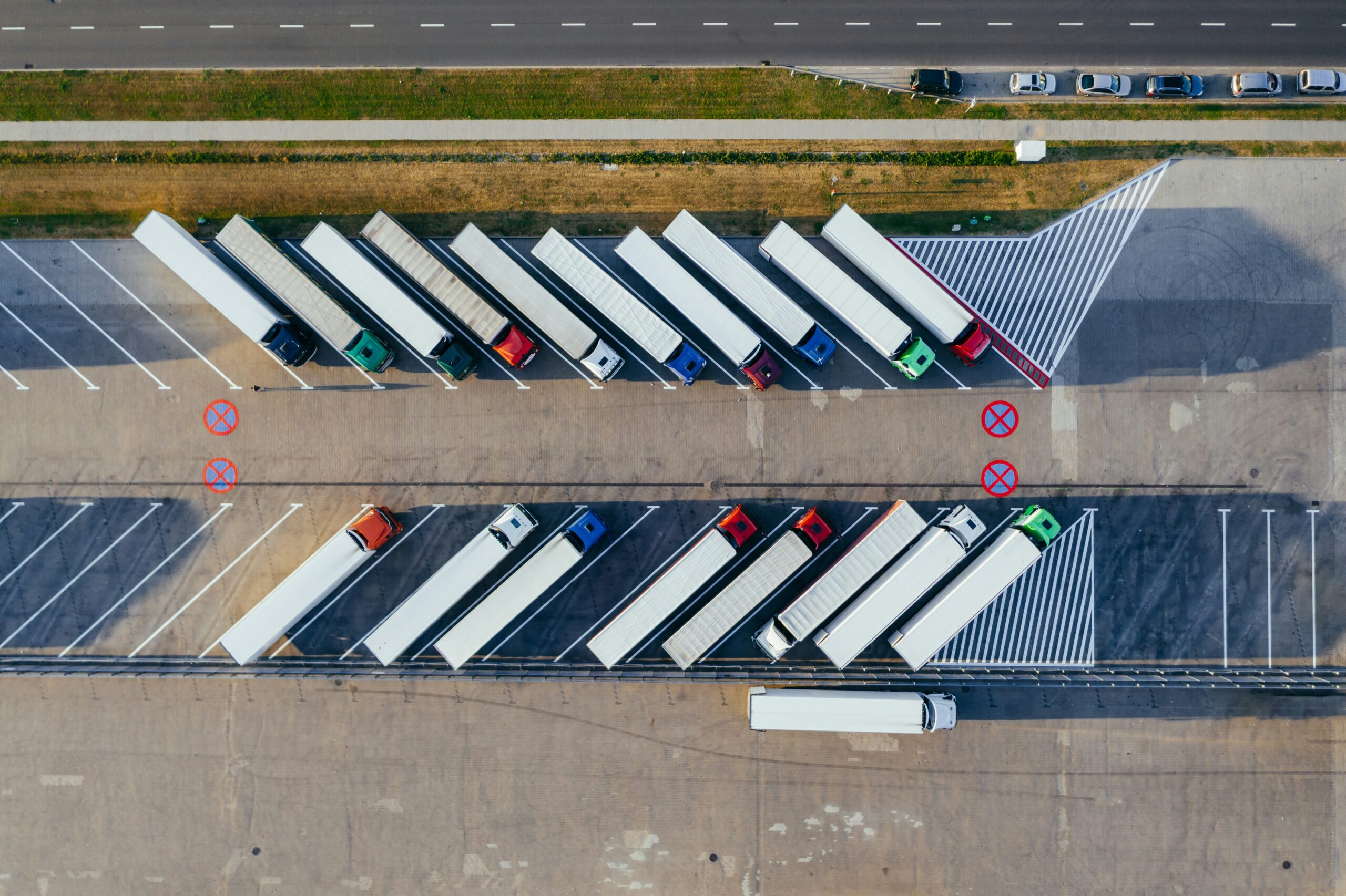A truck is more than just an engine and a cabin; it’s a complex machine built on a single, critical foundation: the chassis. This steel backbone is responsible for everything from carrying heavy loads to ensuring your wheels stay pointed in the right direction. When this foundation is compromised, the entire structure becomes unsafe and unreliable. Ignoring the signs of a bent chassis isn’t just risky, it’s expensive. Downtime for one truck costs between $500 and $1000 a day, and a single breakdown can run to $5,000+ once all flow-on costs are counted. A small performance problem can quickly become a big financial issue. Understanding the clear warning signs is the first step in protecting your investment, your cargo, and your safety on the road.
Introduction: The Unseen Foundation of Your Truck
Why Truck Chassis Structure Is Crucial
The vehicle’s frame, or chassis, is the structural core that supports the entire truck. It bears the weight of the engine, cab, and cargo bed, while also serving as the mounting point for the suspension and powertrain. The chassis must be rigid and have a precise shape. This is important for good handling, stability, and carrying weight. A straight, true chassis ensures that all other components work in harmony.
The Critical Role of the Chassis for Trucks (Structural Backbone)
For trucks, the chassis plays an even more demanding role than in a standard car. It’s engineered to withstand immense torsional forces during towing, hauling, and navigating uneven terrain. This structural integrity is what allows a truck to perform its duties safely and efficiently. Any deviation in its structure can have a cascading effect, compromising the entire vehicle’s performance and safety.
The Dangers of a Compromised Chassis
Driving with a bent frame is a significant gamble. A damaged chassis can cause unpredictable handling. It also makes tyres and suspension parts wear out faster. It greatly lowers the vehicle’s ability to protect people in a crash. The structure becomes weaker. It may not absorb impact forces as it was designed to do. This can turn a minor accident into a serious one. This directly impacts the vehicle’s safety and roadworthiness.
Understanding Your Truck’s Chassis: Body-on-Frame Explained
What is a Truck Chassis?
A truck chassis is a rigid framework, typically a ladder-like structure made of high-strength steel rails and cross-members. This frame provides the primary support for all other parts of the vehicle. It’s the skeleton to which the body, engine, transmission, axles, and suspension are all attached, defining the truck’s wheelbase, strength, and overall dimensions.
Body-on-Frame vs. Unibody Construction: Why Trucks Are Different
Most cars today use unibody construction, where the body and frame are a single, integrated piece. Trucks almost always use a body-on-frame design. This method involves building a separate chassis and then mounting the body on top of it. This separation gives better strength and durability. It also resists twisting forces well. This makes it perfect for heavy towing and hauling. It also simplifies repairs, as the body and frame can be addressed independently.
Key Components of a Truck Chassis
The core components of a typical truck chassis include:
- Frame Rails: Two long, parallel steel beams that run the length of the vehicle. These are the main load-bearing elements.
- Cross-Members: Shorter beams that connect the frame rails, providing lateral and torsional rigidity.
- Suspension Mounts: Brackets welded to the frame where suspension components like leaf springs and control arms attach.
- Body Mounts: Points where the cab and bed are bolted to the frame.
- Engine and Transmission Mounts: Specific cross-members and brackets designed to support the weight and torque of the powertrain.
Common Causes of a Bent Truck Chassis
Major Collisions and Accidents (e.g., T-Bone Collisions, Rollover Accidents)
High-impact events are the most obvious cause of frame damage. A T-bone collision can crush the frame rails inward, while a rollover accident can twist the entire chassis. The immense forces involved in these incidents can easily bend, warp, or crack the high-strength steel of the vehicle’s frame, leading to severe structural misalignment.
Overloading and Improper Towing (Towing Overloads)
Exceeding a truck’s payload or towing capacity puts immense stress on the chassis, particularly on the rear section and suspension mounting points. Consistently overloading can cause the frame rails to sag or bend over time. Wrong towing methods, like using an unbalanced trailer, can cause dangerous twisting forces. These forces can twist the frame.
Off-Roading Mishaps and Rough Terrain
While trucks are built tough, extreme off-roading can push the chassis beyond its limits. A hard landing after jumping, hitting a big rock at speed, or getting stuck on an obstacle can cause a strong, focused impact. This impact can bend the frame. This type of damage is often less obvious than collision-related bending.
Age-Related Wear and Tear (Rust, fatigue)
Over many years and miles, a truck’s chassis is subjected to countless cycles of stress. This can lead to metal fatigue, especially around welds and high-stress areas. In places where road salt is used, rust can eat away the frame. This weakens the frame’s structure. It also makes the frame easier to bend under weight or small impacts.
Minor Collisions (Fender Benders) That Still Impact the Frame
Even a seemingly minor fender bender can transfer enough force through the bumper and body to cause subtle frame damage. Hitting a curb, a deep pothole, or backing into a solid object can move the chassis out of alignment. This can happen even if the visible damage looks small.
Clear Visual Signs Your Truck Chassis is Bent (Visible Damage)
Obvious Deformations and Bends in the Frame (Undercarriage Inspection)
The most direct way to spot a problem is through a thorough undercarriage inspection. With a good flashlight, look along the length of the frame rails from front to back. They should be perfectly straight. Any visible bowing, twisting, or rippling in the steel is a definitive sign of frame damage. Pay close attention to the areas just behind the front wheels and in front of the rear wheels, as these are common bending points.
Misaligned Body Panels and Gaps (Doors, Hood, body panels, misaligned doors)
A straight chassis ensures that all body panels fit together perfectly. When the frame is bent, it throws off these precise alignments. Look for inconsistent gaps between the doors and the body, or where the hood and fenders meet. A tailgate that is suddenly difficult to open or close, or misaligned doors that require slamming, are strong indicators that the underlying structure has shifted.
Uneven Truck Stance or Ride Height
Park your truck on a level surface and step back. Does it appear to lean to one side? Measure the distance from the top of each tyre to the bottom of the fender arch. A significant difference from side to side suggests that the suspension is being held at an incorrect height, often due to a bent or sagging vehicle’s frame.
Cracked or Damaged Welds and Mounts
During your undercarriage inspection, examine the factory welds where cross-members connect to the frame rails. Fresh cracks in the paint or visible stress fractures in the weld itself are red flags. Also, check the body and suspension mounts for signs of stretching, tearing, or deformation, which indicate the frame has been subjected to extreme force.
Visible Cracks, Dents, or Warping (frame warping)
Beyond obvious bends, look for smaller signs of trauma. Large dents, creases, or visible frame warping, especially near suspension mounting points, signal a significant impact. These bends damage the metal’s structure. They clearly show a problem. You need a professional at an auto body shop to fix it.
Imperfect Wheel Alignment at a Standstill (Camber Angles)
Look at your front wheels from the front of the truck. Do they appear to be tilted in or out at the top? This is known as camber. Some camber is normal. But if one wheel tilts a lot more than the other when parked, it may mean the frame is bent. This bends the suspension parts out of place.
Handling and Steering Problems as Indicators of Chassis Damage
The Truck Pulls to One Side (Steering, Steering Response, Misalignment)
One of the most common complaints related to a bent chassis is the vehicle pulling to the left or right while driving on a straight, flat road. This happens because frame damage alters the suspension geometry, causing a wheel alignment issue that cannot be corrected through a standard alignment service. This persistent misalignment forces the truck off-centre, requiring constant steering correction from the driver.
The Steering Wheel is Off-Centre While Driving Straight
If you have to hold the steering wheel at an angle to keep your truck moving in a straight line, it’s a clear sign of an alignment problem. While this can be caused by worn steering components, it is also a classic symptom of a bent frame. The chassis misalignment forces the steering system to compensate, resulting in an off-centre wheel.
Difficulty Steering or a Loose Steering Feel
A bent frame can put stress on steering components, leading to a steering feel that is either unusually stiff or excessively loose. You might notice the steering response is delayed or feels disconnected from the road. This indicates that the precise relationship between the steering box, linkages, and wheels has been disrupted by the structural damage.
Poor Tracking or Wandering on the Road (Performance)
A truck with chassis damage may struggle to hold a straight line, a condition known as “wandering” or “poor tracking.” It might feel like the front and rear wheels are not following the same path. The frame misalignment changes the vehicle’s wheelbase and axle position. This causes instability and hurts the vehicle’s performance and safety.
Unstable Handling, Especially When Hauling or Towing
The negative effects of a bent chassis are often amplified under load. When hauling a heavy payload or towing a trailer, the added weight and forces can exacerbate the instability. The truck may sway excessively or feel dangerously unpredictable, as the compromised frame struggles to manage the dynamic forces.
Uneven Tire Tracks When Driving
A subtle but telling sign is “dog tracking,” where the rear wheels do not follow directly behind the front wheels. This can sometimes be seen by having someone follow you or by looking at the tracks left after driving through a puddle or on a dirt road. It’s a definitive sign that the frame is bent, causing the axles to be out of alignment with each other.
Tire Wear and Suspension Issues Caused by a Bent Chassis
A bent truck chassis fundamentally alters the geometry of the suspension system. The mounting points for control arms, shocks, and springs are not in their original places. Because of this, you cannot get a proper wheel alignment. This constant misalignment forces the tyres to scrub against the pavement at incorrect angles. The most common result is rapid and uneven tyre wear. You may see the inside or outside edge of a tyre wearing down much faster than the rest of the tread. This not only destroys expensive tyres but also puts continuous, abnormal stress on suspension components. Ball joints, tie rods, and bushings are forced to operate outside their intended range of motion, leading to premature failure. If you are consistently replacing tyres or suspension components on one side of your truck, the root cause could very well be a bent frame.
Recognising Bent Truck Frame Risks
The chassis is the bedrock of your truck’s strength, performance, and safety. You can recognise a bent frame by visible deformities, panel gaps, steering problems, or uneven tyre wear. Recognising these signs is important to keep your vehicle’s structure strong. If you ignore these warnings, repair costs can rise. Your vehicle may not handle as expected. Its safety systems might fail in an accident. In 2023, there were 4,354 fatalities in large truck crashes, a stark reminder of the importance of vehicle roadworthiness.
If you suspect your truck’s chassis is compromised, don’t leave it to chance—book a precision inspection with a Wales Heavy Vehicle Repairs site. Our heavy-vehicle technicians use laser chassis measurement to diagnose and correct structural misalignment, restore handling, and reduce tyre and suspension wear. We provide fast, written estimates, insurance-ready reports, and fleet-friendly turnaround to minimise downtime. Contact Wales Heavy Vehicle Repairs today to schedule your chassis assessment.



